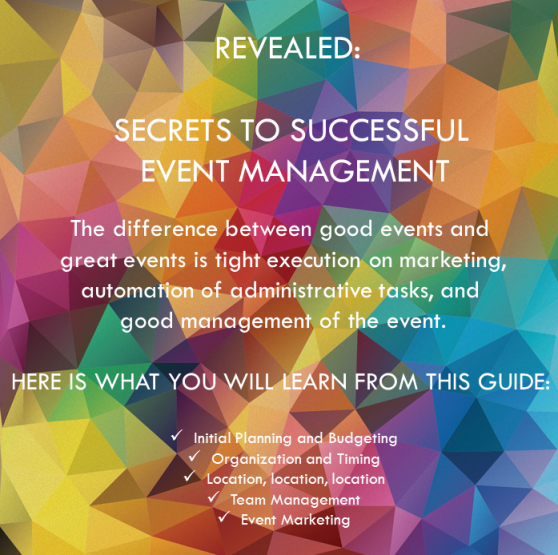
Image: The Haven Resort, Ipoh, Malaysia
Do you need to work out a strategic plan? Build your team? Launch a project? It's unlikely that you will be able to work through these projects in a one- or two-hour meeting-;which is why many companies choose to hold an annual retreat.
"You start to understand perspectives that maybe you hadn't considered before," CEO and founder of Tutor.com George Cigale says of his company's past retreats. "Slowing down time allows you to think a little bit differently about the way you communicate and depend on each other." Throughout the years, Tutor.com's retreats have facilitated both large changes, like deciding to expand into the consumer market, and small changes, like instituting monthly meetings about operational metrics.
Taking time for a retreat eliminates daily work distractions and helps set the tone that the project you are working on is important and worth extra time. Here's how to get started on making yours a success.
1. How to Plan a Company Retreat: Know Your Goal
Without a goal, there's no point to a retreat. "Having a retreat to keep things exactly as they are isn't a good use of staff time," says Marianne Liteman, the president of Liteman Rosse, a small consultancy that designs and leads retreats. "The retreat should have a business purpose. If you don't have a strategic reason for holding one, it's better to do something else with your resources."
Bruce Withrow, the founder of Meeting Facilitators International, helps his clients start to plan their retreats by asking this question first: "If I could wave a magic wand and put it into your hand, and you could make a successful conclusion to your retreat, what would it look like?" It's important to be as specific as possible. "To just say 'strategic planning' isn't enough," says Withrow, who plans between 50 and 60 retreats every year. "It's such a plastic word that means so many different things to so many different people. What is it that you think is missing? What is it that you want?"
Once you narrow down your accomplishment wish list to some specific goals, make sure that they can be realistically accomplished within the time you've allotted yourself. Decide how much time you need to do each item properly, and add up the hours that you've assigned each task you're hoping to accomplish. If the time to effectively complete your wish list exceeds the time you have at the retreat, then you need to trim it down.
Your goals should drive your invitation list. Cigale invited all of his employees to his retreats because one of his goals was to have every employee understand how different parts of the company work. Because Tutor.com has under 50 employees and many people telecommute, this made sense. Depending on your company and goals, it may be more appropriate to invite just the senior management team or a vertical slice of the organization. In some cases, such as when you are looking for ways to better serve your clientele, it might even be appropriate to invite a handful of customers. "In a retreat you make a lot of decisions, and that requires action afterward," says Bruce Honig, the founder of a Bay Area-based meeting facilitation company called Honig Idea Guides. "So if you have people who provide energy or support for that action to occur, you want them there. If they can sabotage the process after the retreat, you also want them there."
2. How to Plan a Company Retreat: Logistics
Before you stress about where you will go and what you will do, remember that, from a business perspective, this is probably the least important part of planning your retreat. Cigale's company has held retreats at a dude ranch, Las Vegas, Florida, and, when the budget was a little tighter, at a conference center near the company's offices. But he considers each retreat to have been successful.
"It's nice to play golf, and it's nice to have trees around you, but that's not necessary to get the work done," Honig says.
If you can afford it, however, adding some fun to the trip does have advantages. First, it can help get your employees excited about the retreat and somewhat compensate for pulling them away from their homes and families. Second, it can provide time for informal discussion and help your team get to know each other better. "Just the time together at dinner and talking about the Olympics or whatever, I think that that helps with communication," Withrow says. Cigale recommends sticking with about a 20 percent fun, 80 percent work ratio.
3. How to Plan a Retreat: Choose a Facilitator
Another planning issue that should be on your mind from the start is who will facilitate the retreat. The most important qualities in a facilitator is that he or she is trained in group processes and able to maintain a neutral position throughout brainstorming and debate. For the later reason, the CEO or a manager of the company is often a poor choice. One popular alternative is to hire a professional facilitator, which may cost up to $5,000 per day but will ensure that time is used efficiently.
If you do chose to facilitate your own retreat, however, Withrow suggests that you save a seat at the table while you are standing by a screen or at a flip chart taking notes. If you have an opinion that you need to express, walk to the chair, sit down, and announce that your facilitator hat is off. "You have to be really careful not to overstep your bounds," Cigale says. "Give people the comfort and permission to speak openly. If you're the facilitator and an authority figure in the room, the risk really is that there won't be open and honest debate."
Using a facilitator from a different department may also be an option. "In a strategic planning session, it will be very tough to have someone more junior in the organization telling the CEO and the VPs when to talk, when not to talk, and pushing back on them," Withrow says. "But a retreat for another reason, say it's a customer support area or they want to talk about new CMS system or something like that, a peer facilitator from somewhere else in the organization could handle it."
4. How to Plan a Retreat: Using Your Time Effectively
Planning is your friend when it comes to retreats. By the time you arrive at the retreat location, you and every attendee should already have a good idea of how you are going to accomplish your goals. Will you make decisions by consensus or majority? Does the person whose organizational responsibility the decision is get the final say? Will you debate, branch out into smaller discussion groups, or brainstorm? These are questions that you should work out before you get to the retreat.
"Participants should know from the beginning whether they are being asked to make decisions that the organization's senior leadership will support or recommendations that senior leadership will take into consideration," Liteman says. "Either is okay. What's not okay is for participants to be led to believe they're making decisions only to find out that the boss is cherry-picking: 'Let's implement this suggestion, but not that one. And by the way, here's something the participants didn't even think of that I'm going to ask them to implement.'"
There are innumerable ways to format your meeting time. Honig likes to start out strategic planning sessions by examining the history and milestones of the company. Withrow sometimes asks people to defend assigned positions during a debate. Cigale devotes much of his time to presentations by different departments of his company. And Liteman uses tools including improvising, role plays, storytelling, music, metaphor, silence, and art to facilitate retreats.
Some key principles to follow no matter what approach you choose are:
- Collaborate. "Even if there are fifty people, everyone should have the means and the opportunity to contribute to everything," Honig says.
- Make discussion introvert-friendly. Ask people to write down answers to questions instead of blurting them out, and ask every person in the room to give his or her opinion in an organized manner.
- Encourage people to express themselves. Have people use the same marker and type of paper to submit their opinions so they won't be afraid of judgment. Make sure minority opinions have a way to be heard.
- Combine team building with work. Obstacle courses might be a good way to diagnose team problems or have fun, but the real team development happens around the work. "What you do in team development is look toward the future and think about how the team is going to be different," Honig says. "Specifically, the team should decide their next steps in the future, versus just experiencing a task together and saying, 'look, we can work well together.'"
- Stay on topic. Withrow uses a "parking lot" to accomplish this. When someone brings up an issue that isn't on the agenda at that time, he'll write it down on a whiteboard or flip chart and come back to it at the end of the meeting.
- Diverge, converge. It can be effective to break up the team and assign them different aspects of the project that they can bring back to the larger group for discussion.
- Document your next steps. Assign a champion for each step that the team has agreed on. Make these steps as specific as possible. "Document who does what, by when, as measured by how at the end of it," Withrow says

Source: Inc.com
4 Things to Know when Planning a Corporate Retreat
Image: The Haven Resort, Ipoh, Malaysia Do you need to work out a strategic plan? Build your team? Launch a project? It's unlikel...




